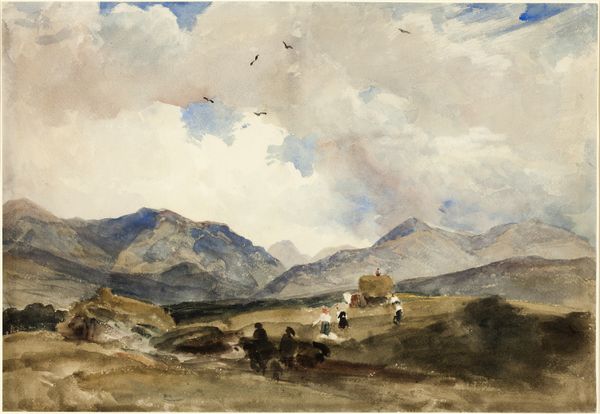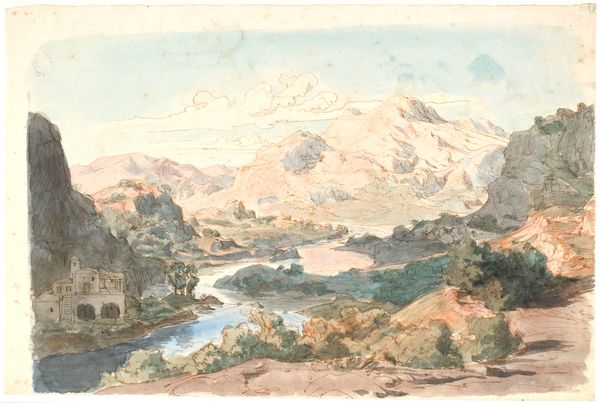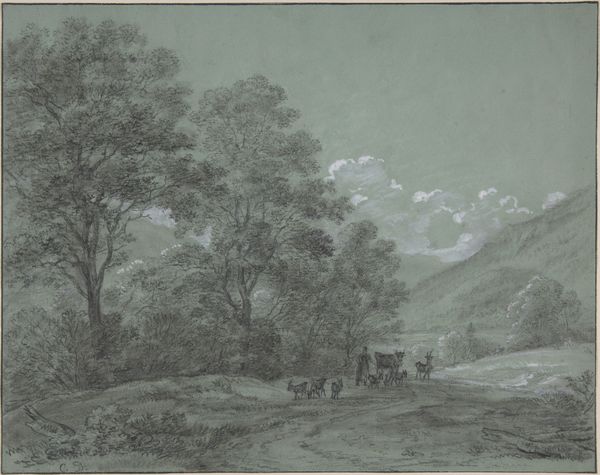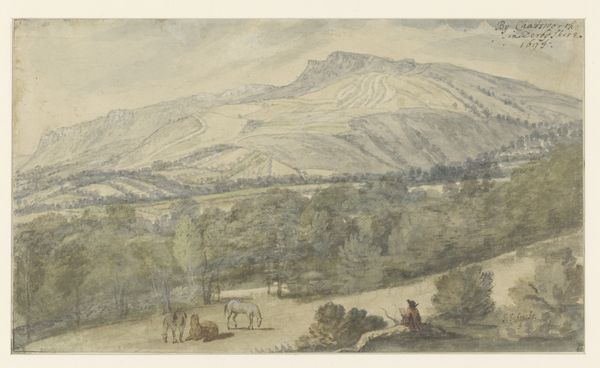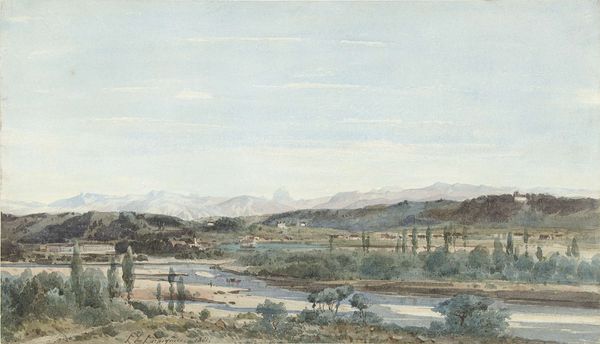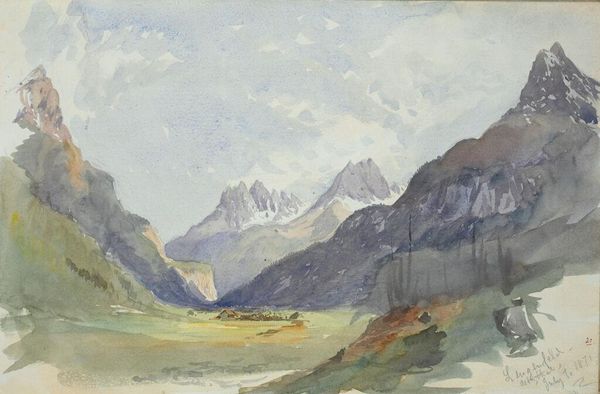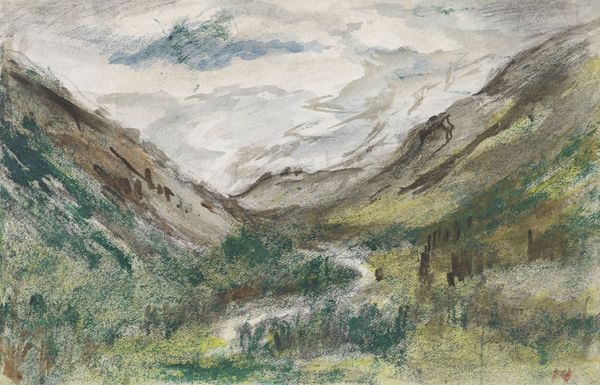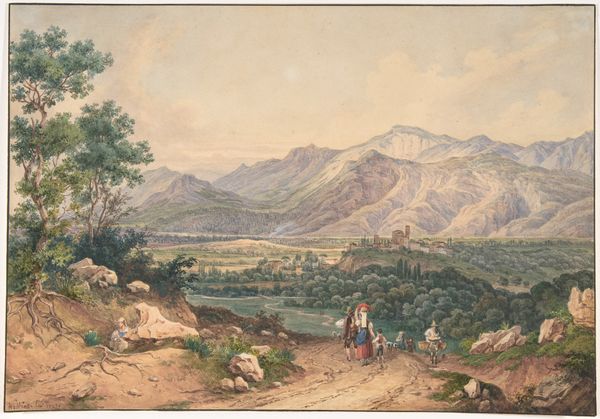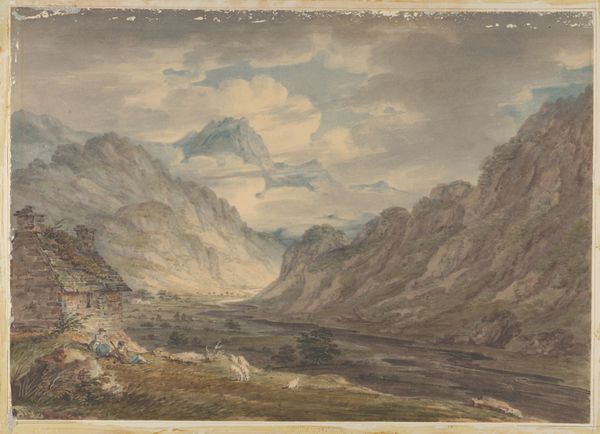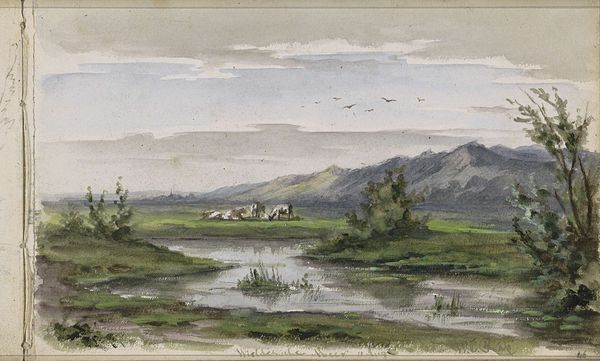
painting, plein-air, watercolor
#
dutch-golden-age
#
painting
#
impressionism
#
plein-air
#
landscape
#
watercolor
#
genre-painting
#
realism
Dimensions: height 167 mm, width 257 mm
Copyright: Rijks Museum: Open Domain
Curator: What a wonderfully atmospheric piece! It's Jozef Israëls's "Berglandschap met veehoeder en twee koeien," or "Mountain Landscape with Cattle Herder and Two Cows," likely created sometime between 1834 and 1911. Editor: It’s a landscape in muted tones; feels quite melancholic. There's a rawness to the brushwork, a sense of immediacy… like a fleeting impression. You can almost feel the damp air and the weight of the overcast sky. Curator: Israëls, particularly known for his involvement with the Hague School, often depicted scenes of rural life. What intrigues me is the use of watercolor in this work. It's almost a rejection of the grand history paintings of the era, a deliberate embrace of the ephemeral and everyday. The watercolor itself suggests an intimate, portable means of production, wouldn’t you agree? Editor: Absolutely. This intimacy challenges traditional art hierarchies; a simple watercolor elevating the life of the rural worker and their connection to the land. This piece could be viewed as a commentary on the shifting social landscape, a quiet nod to the dignity of labor. Consider its display within institutions like the Rijksmuseum—a subtle assertion of the value of ‘ordinary’ subjects. Curator: The composition is equally fascinating. The herder, leading his cows, is quite small in relation to the dominating mountain range; however, that could be an allegory of how mankind still needs nature to live on. What Israëls is using here might just be read as something about humanity’s relative insignificance, and that would have social and political ramifications in terms of people believing their governments' worthiness. Editor: That muted palette… it speaks volumes. You could consider it a reflection of the economic hardships experienced by rural communities. I feel its somber tones emphasize the struggle for survival. Also, what kind of paints, brushes, and paper or parchment would the artist have had access to, and how do these materials lend to this aesthetic, right? It asks big questions like why these specific hues are what make this landscape look so 'natural,' almost! Curator: Very insightful. The ‘naturalness’ here being constructed via careful selection and manipulation of materials and cultural references, so to say. This certainly highlights how the humblest of media can carry substantial artistic weight. Editor: It makes you ponder the choices, the artist's hand, and its position on a political canvas during turbulent periods in our art and society. Thanks for lending your expertise on this landscape, it’s given me a lot to reflect on, so to say!
Comments
No comments
Be the first to comment and join the conversation on the ultimate creative platform.

